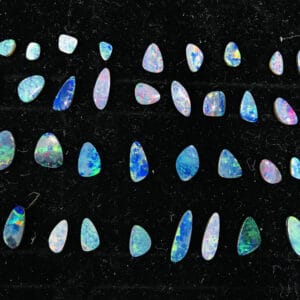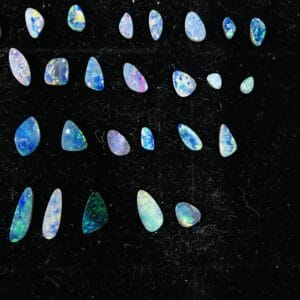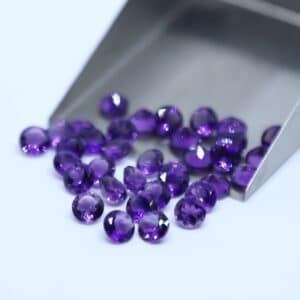Loose Gemstone
- Out of Stock
- Loose Gemstone, Loose Stones By Pieces
- Sale!
- Loose Gemstone, Loose Stones By Pieces
-
€ 15,00€ 10,00
- Out of StockSale!
- Loose Gemstone, Loose Stones By Pieces, Natural Gemstone For Sale
- € 2,00 – € 35,00
- Out of StockSale!
- Loose Gemstone, Natural Gemstone For Sale, Stones in pairs
-
€ 35,00€ 20,00
- Out of StockSale!
- Loose Gemstone, Natural Gemstone For Sale, Stones in pairs
-
€ 40,00€ 25,00
- Sale!
- Loose Gemstone, Loose Stones By Pieces, Natural Gemstone For Sale
- € 1,00 – € 15,00
- Sale!
- Loose Gemstone, Loose Stones By Pieces, Natural Gemstone For Sale
- € 2,50 – € 100,00
- Out of StockSale!
- Loose Gemstone, Natural Gemstone For Sale, Stones in pairs
-
€ 70,00€ 50,00
- Out of StockSale!
- Loose Gemstone, Natural Gemstone For Sale, Stones in pairs
-
€ 25,00€ 15,00
- Out of StockSale!
- Loose Gemstone, Natural Gemstone For Sale, Stones in pairs
-
€ 60,00€ 40,00
- Out of StockSale!
- Loose Gemstone, Natural Gemstone For Sale, Stones in pairs
-
€ 50,00€ 30,00
- Out of StockSale!
- Loose Gemstone, Natural Gemstone For Sale, Stones in pairs
-
€ 65,00€ 35,00
- Out of StockSale!
- Loose Gemstone, Natural Gemstone For Sale, Stones in pairs
-
€ 45,00€ 30,00
- Out of StockSale!
- Loose Gemstone, Loose Stones By Pieces, Natural Gemstone For Sale
- € 2,00 – € 40,00
- Sale!
- Loose Gemstone, Loose Stones By Pieces, Natural Gemstone For Sale
- € 2,50 – € 100,00
- Out of StockSale!
- Loose Gemstone, Natural Gemstone For Sale, Stones in pairs
-
€ 35,00€ 25,00
- Out of StockSale!
- Loose Gemstone, Natural Gemstone For Sale, Stones in pairs
-
€ 35,00€ 20,00
- Out of StockSale!
- Loose Gemstone, Natural Gemstone For Sale, Stones in pairs
-
€ 35,00€ 20,00
- Out of StockSale!
- Loose Gemstone, Loose Stones By Pieces, Natural Gemstone For Sale
- € 2,00 – € 35,00
- Out of StockSale!
- Loose Gemstone, Loose Stones By Pieces, Natural Gemstone For Sale
- € 1,00 – € 12,00
- Out of StockSale!
- Loose Gemstone, Natural Gemstone For Sale, Stones in pairs
-
€ 50,00€ 35,00
- Out of StockSale!
- Loose Gemstone, Natural Gemstone For Sale, Stones in pairs
-
€ 45,00€ 30,00
Loose Gemstone
The colour and cut of the Loose gemstones will be a major consideration when selecting a piece of jewellery or even designing your own.
With so many stunning and vivid Loose gemstone colours to select from, you’ll want to find one that best suits your own style and personality.
We have loose gemstones in every hue imaginable at cavcreation, including stunning rubies, dazzling sapphires, lustrous emeralds, and a spectacular assortment of outstanding semi-precious Loose gemstones, so you may find exactly what you’re looking for.
We can also supply exactly matched loose gemstone pairings for your own unique set of stunning earrings or symmetrical ring design.
Please contact us today so that we may assist you in locating the ideal loose gemstone for your own one-of-a-kind piece of jewellery.
Check out our stunning range of handcrafted Loose gemstone jewellery created by our skilled craftsmen.
Alternatively, select a high-quality loose gemstone from our extensive collection of loose sapphires, emeralds, rubies, and semi-precious gemstones in all cuts and sizes, all of which are available at wholesale prices.
faqs related To Loose Gemstone
What does loose gemstone mean?
Why are loose gemstones so cheap?
How much are loose gemstones worth?
Is loose gemStone a good investment?
Why do people buy loose gemstones?
What can I do with small gemstones?
2. Agate bath salt melts.
3. Stunning homemade painted crystals.
4. Origami Loose gemstones.
5. Design inspired Loose gemstone coasters.
6. Miniature crystal shaped Loose gemstone soap.
7. DIY clustered crystal soap.
8. DIY Loose gemstone lotion massage bars.
How do you store loose gemstones?
Reasons to Buy Loose Gemstones
There are a variety of reasons why you might want to buy loose gemstones. The most important reason is that you have a choice.
When you’ve found a stone you adore, all you have to do now is locate the perfect jewellery set to showcase it.
You might choose to have a ring or pendant made to your specifications. When you buy a loose gemstone, you have complete control over the setting.
Because the cost of producing loose stones is far lower than that of a mounted item of jewellery, especially 14KT gold jewellery, you may often get fantastic deals on them.
Perhaps you’ve considered designing your own jewellery or have taken up jewellery-making as a pastime. All of these factors are valid justifications for buying loose gemstones.
Loose Gemstones: A Smart Buy for Jewelry
Coloured Loose gemstone jewellery has been popular for generations, and many of the well-known gem kinds, such as ruby, sapphire, garnet, peridot, and jade, have been around since the dawn of time.
Some varieties were not recognised as different species prior to the development of gemology as a science. Spinel was initially identified by its gemological qualities in the late 19th century after it was frequently confused with ruby and sapphire.
Only in 1863 was jade identified as having two separate species: jadeite and nephrite.
They usually only have a few gem kinds in stores, such as ruby, sapphire, emerald, blue topaz, pyrope garnet, tanzanite, opal, and aquamarine.
Many sorts of coloured stones are in short supply, and there is just not enough material to supply the retail channel. This is why retail jewellers stock only a small number of coloured stones.
Natural spinel, for example, is a gem dealer’s choice because of its exceptional brilliance and fire.
However, due to a scarcity of spinel, it is rarely encountered in retail jewellery stores. Natural zircon, tsavorite, and spessartite garnet, alexandrite or chromium, and rubellite tourmaline are also uncommon in retail stores.
However, the scarcity of choice in jewellery stores isn’t the only incentive to purchase loose gemstones from a qualified gem merchant. In truth, even in high-priced pieces from well-known merchants, the quality of colourful stones in commercial jewellery is frequently poor.
The reason for this is that the shopkeeper is more concerned with the jewellery than with the diamond. While he may have ruby rings, the rubies are almost certainly fracture-filled African rubies rather than excellent Burmese rubies.
The reality of the Loose gemstone industry is that a jewellery manufacturer could not produce a line of excellent ruby rings unless the stones were very small, simply because obtaining enough quality rubies to construct hundreds (let alone thousands) of rings is quite difficult.
If you want to buy top-quality natural Loose gemstones, particularly untreated stones, you should approach a specialised gems merchant.
Because the gem dealer’s stock is far larger than the jeweller’s, you will have a much wider range of hues, cuts, and sizes.
Except for diamonds, higher-end gem dealers will commonly issue certification from renowned gemological laboratories for the stones they sell; this is not yet standard practice in the retail jewellery industry.
Experienced Loose gemstone purchasers also know that buying a loose stone rather than one already set in jewellery is safer. Inclusions in a gem can be hidden by jewellery settings, and the colour of the stone can even be changed. Unmounted gems should always be examined, and gemological laboratories prefer to test unmounted stones.
Finally, when you purchase a high-quality loose gemstone for a personalised piece of jewellery, both the gemstone and the jewellery set will reflect your own taste. Creating a one-of-a-kind piece of jewellery that you can wear with pride and pass down to your children is a once-in-a-lifetime opportunity.







































